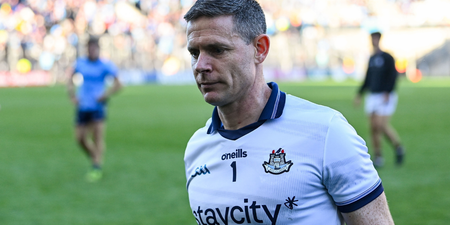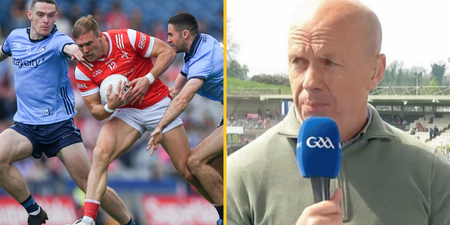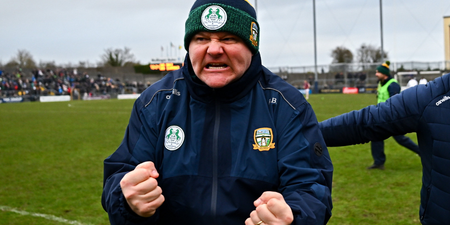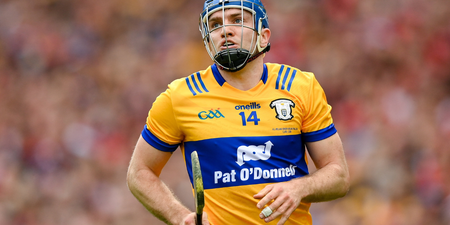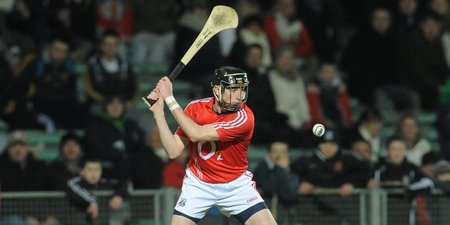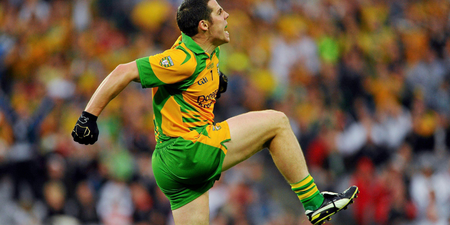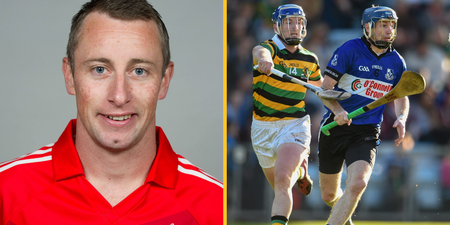By Stephen O’Meara
Four times Carlow got off the shoulder and went at Dublin with running power. Three times, they scored.
When they ran at Dublin from deep, they troubled them.
To do that, they had to set up a certain way.
Dublin beat Carlow by 12 points and more than double scores, playing against 14 men for almost half an hour. There’s not a lot we can learn from that, right?
Wrong!
Let’s start from the default position that almost anything positive from a Dublin perspective in Portlaoise has to be taken with a pinch of salt. After all, they beat a Division 4 side. To be fair to Dublin, they ground them down methodically.
If, however, there are negatives to found, it has to be significant that they showed up against one of the minnows of Gaelic football.
Breaking the game down into smaller statistical sections, there are a couple of significant elements to take from this game.
Carlow’s long kick-outs
Carlow kicked long kick-out after long kick-out, over their fielders and into the laps of free Dublin players. Up to the point where Brendan Murphy was sent off, they had gone long on 14 occasions, losing 10 and winning just four.
There are a few likely possible reasons for why they continually kicked long kick-outs to where they were outnumbered.
- a) They simply made a hash of them.
- b) Their manager is ahead of the game with statistical analysis. For those who are, there are still significant gains to be made by doing things that may, on the surface, appear to be wrong.
Typically, my statistical analysis is showing that a side in possession, facing a well set up 12 or 13 strong blanket defence, are actually more likely to concede a score on the counter-attack upon losing possession than they are to score from their own possession.
It’s not beyond the realms of possibility that Carlow had actually intended to lose long kick-outs over the top of 14 of their own team, hoping to turn Dublin over as they attacked into a blanket defence, and then catch them on the counter-attack.
It’s difficult to see how Carlow could have won this kick-out.

But they have spare men goal-side once they lose it.

Leaving them with four spare men at the back.
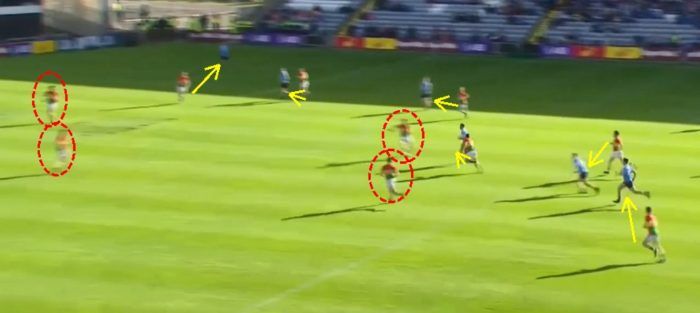
There’s also a third explanation for their kick-out strategy.
- c) Most likely, they hedged their bets and figured, if they could win them, they’d be in position to break into plenty of space. Failing that, they’d lose them in the best possible circumstances, with 13 or 14 men behind the ball.
If they did count on counter-attacking Dublin after losing their own kick-outs, they grossly over-estimated their ability to defend such situations. From the 10 they lost, they conceded four points directly (and one missed free) and scored nothing on counter-attacks.
On all five occasions, Dublin went back before they went forward and Carlow had at least 13 behind the ball when Dublin began to move forward.
Carlow scored nothing from the four they won.
Carlow’s short kick-outs
This was without doubt the most significant pattern of the game, and one which should be of huge concern to Dublin.
Last year’s All-Ireland semi-final against Kerry showed up a striking pattern on Kerry’s kick-outs. From Kerry’s 18 long kick-outs, they conceded a net score or 0-6 to 0-0 to Dublin, with Dublin winning 12 against Kerry’s six in the air.
However, from 10 short ones which Kerry played, which weren’t hit quickly (normally the key element in expecting to score from short kick-outs), Kerry scored 0-5 and conceded nothing upon first turnover.
This figure goes against all average patterns. Typically, short kick-outs kicked more than 9.5 seconds after the ball goes dead are more likely to end up as a score for the defending team upon the first turnover than they are for the team who play the kick-out.
Considering the fact that allowing opposition teams to play short kick-outs/not being able to prevent them has become a huge part of the game, you really want to be confident enough to say, “go on, have it, and see if you can break us down”.
Up to the sending off yesterday, Carlow played three such, typically statistically negative, slow kick-outs to the full back line.
One of them ended up as a Carlow point, and the other two resulted in Carlow earning scoreable frees, one of them from inside 35 metres.
Carlow managed a score from this short kick-out.

This isn’t Kerry. It’s Division 4 Carlow. It’s on a narrower pitch than Croke Park. And Dublin essentially came in at a one hundred percent kick to score concession ratio where they had their whole side behind the ball.
You can say, it’s only Carlow and they might not be trying their best, but we can safely say that Dublin were trying their best against Kerry last August when they shipped an off the charts fifty percent score concession on slow kick-outs from the full back line.
This is a significant pattern, and one which rings alarm bells about Dublin’s competence as a defensive unit.
When you attack and counter-attack so well you can cover up all manner of defensive ills. Make no mistake about it. Dublin have a problem here which alludes to their entire defensive structure.
More significantly, analysis of the two league encounters suggests that Kerry appear to have fixed their issues with losing their own kick-outs, and conceding heavily when they do, which cost them fiercely last year.
Based on this, if Dublin don’t sort out their incapacity to defend this situation, I currently make Kerry favourites if the sides should meet later in the year.
Dublin’s kick-outs
Dublin managed five quick kick-outs to the full back line in the opening 47 minutes. With Carlow backtracking en masse, they were difficult to break down, but Dublin managed two points from these five.
However, they also conceded two points upon the first turnover on these kick-outs, leaving a neutral net score on these kick-outs.
From one attempt to the half back line, it was intercepted by Carlow, and they scored. A point scored by Dublin on their solitary delayed kick-out to the full back line meant that Dublin’s net result on kick-outs was neutral.
Carlow intercept Cluxton’s attempt to the half back line.

With Carlow dropping off the Dublin kick-out en masse, Cluxton was only forced long once, which Carlow won on the break. We’ll need to see more before we know if Dublin have fixed their problem of being crucified on breaks off their own kick-outs which was chronic in the league.
Off the shoulder
We saw a fortnight ago how Mayo’s scores against Sligo were inextricably linked to taking hand-passes off the shoulder. We saw how 1-8 of their 2-14 came off the back of a line-break being made where a player received the ball from another who had had the possession for less than two seconds. Of these, 1-7 saw the line break made in the middle third.
All in all, you’d have to give Carlow credit. Ireland’s second smallest county, they only trailed by eight points to five at half time and by ten to six when Murphy was sent off, against the giants of football.
I’d make two criticisms, however. Firstly, for large parts of the game, even up to the 47th minute, they didn’t have a single player inside the Dublin “45” and frequently not inside the Dublin half at all.
Carlow have nobody up front.
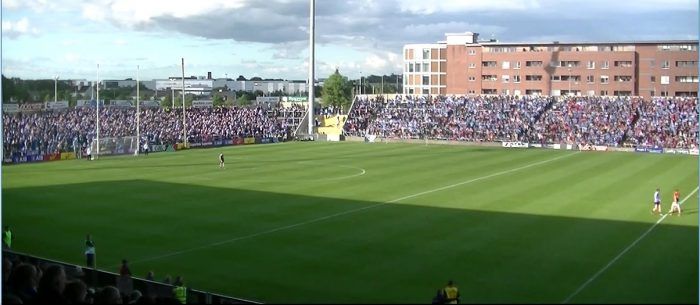
Fair enough, defend en masse, but give yourselves an “out” up front so you have some prospect of getting quick ball into the full forward line. One less in defence doesn’t make a huge difference. One single player, never mind two, up front, potentially could.
Secondly, they were terribly laboured in possession. I’m all for lateral play in the right circumstances, but they were pedantically slow. Rarely did anybody come off the shoulder to take the ball at pace. Therefore, they were frequently left with just one option to penetrate Dublin – taking on superior opponents directly, man-on-man. Generally, it didn’t work out well for them.
What is highly significant, however, is that in the first half, on just four occasions, Carlow tried to take the ball off the shoulder of a man who had just received it, at pace, and penetrate Dublin in the same movement. On three of these four occasions, they succeeded. On all three occasions, they scored.
St. Ledger receives the ball.
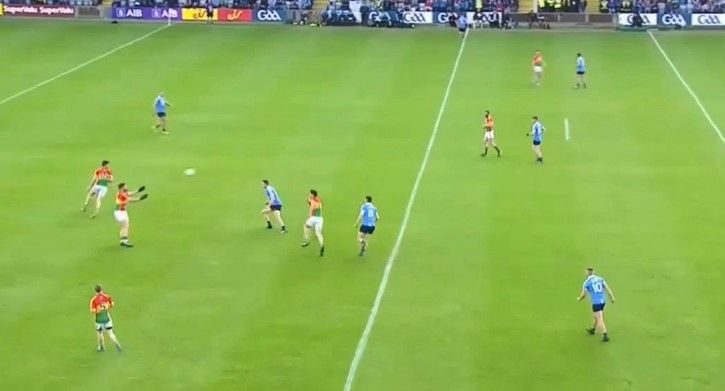
And shifts it quickly.
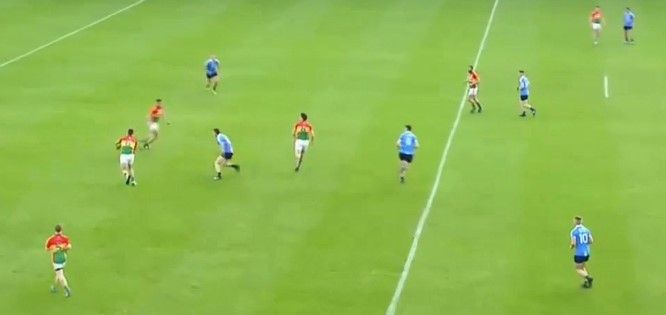
And Seán Murphy breaks the line off the shoulder and scores.
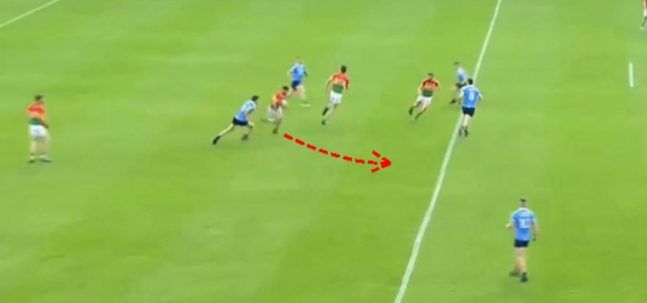
They tried and succeeded three times in the opening 12 minutes of the second half, with one resulting in a point and another a missed free!
Once again, against a Division 4 side, this is a worrying defensive pattern and reading for Dublin.
Seven attempts by Carlow to penetrate Dublin, coming off the shoulder with a quick hand-pass, they succeeded six times and scored/earned a scoreable free five times.
What could it mean?
Equally noteworthy, it’s going to be worth a look next week when Mayo face Galway. If Mayo’s attacking figures against Sligo in this regard are the norm, and Dublin’s defensive ones against Carlow are the norm (figures weren’t taken on this last year), could it explain how Mayo lost to Galway and stumbled over the line against Tipperary last year, yet only lost by a point to a far superior Dublin in a replay?
Do both Galway and Tipperary have a higher capacity than Dublin to spot the opponent coming off the shoulder in advance and step off the man, stifling Mayo attacks before they start, in the middle third? It’s certainly worth further investigation.
For now, we can say, as fearsome as Dublin are, figures show that there are defensive elements which are far from ideal.




